Digging into X2Ag-Ortho, p.1
March 17, 2012As challenging as it might be to try to think rigorously in the Springtime, I'm giving it a go. I've just gone through another round of "I can't believe this works" with myself. Sooner or later, I'll finally believe it. I think it's been so hard because of the history of entrenched negativism on the subject. It would take a better pop psychologist than I to understand the issues involved today. All I know is that the limits on what can be accomplished DIY are much less limited than legend would have us believe.
A few weeks ago, I bit the bullet and bought a thermostatically-controlled waterbath. It's a convenience—not a necessity. At $700, it's really a luxury. But, boy, what a luxury. It's given me back the time I've been spending babysitting waterbath temperature. I'd never recommend it to anyone who isn't planning on making all their own film from now on, but there's no denying the time savings if you are.
The only fuzzy fact in making my emulsions now is the exact amount of erythrosin to add. Long story short: too much seriously reduces overall sensitivity. So, I made up 100 ml of a pale pink dilution. I'm sure it will keep in an amber bottle for as long as it lasts. For this first batch I added three drops of the erythrosin dilution and one drop of a 1 drop Neon Pink: 20 drops water dilution. The results are fascinating. The two negatives below are with this emulsion—no filter on the left and medium yellow on the right. Below those are sample charts of TLF #2-Ortho from a few months ago for comparison. It was nice to see the near perfect match of the no-filter version (essentially colorblind.) But the really interesting aspect is the filtered negative. It achieved only a partial ortho response in the red and yellow blocks (and yellow-green and orange), but nowhere else.
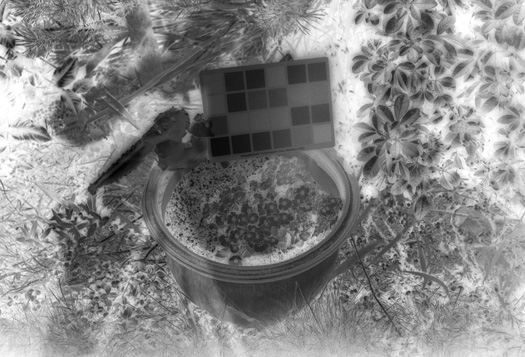
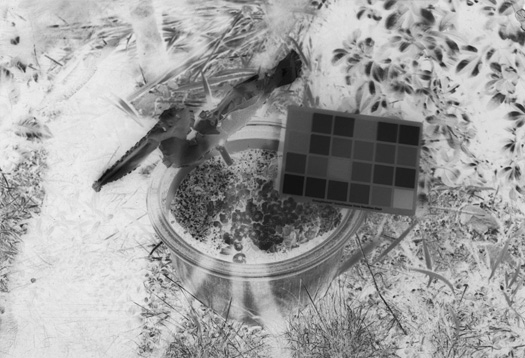
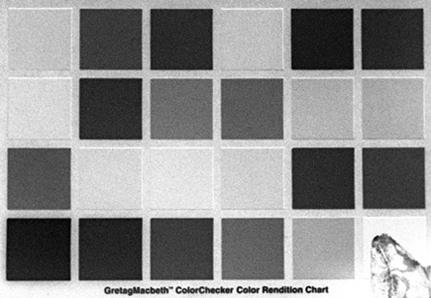
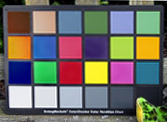
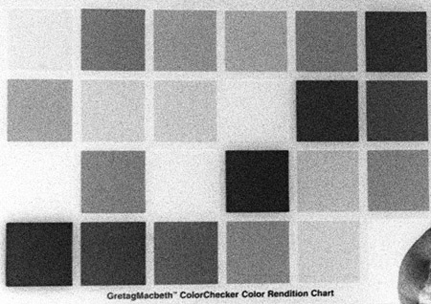


Another aspect of this that has come as a surprise to me is how much effect developers have on pre-modern emulsions. They certainly affect speed, but also the grain and contrast. "Defender 55D(wr)" has been my go-to for speed, so I ran a calibration check of exposures using only Def at various times and dilutions. It's very flexible and I love the overall look, but a couple of other developers are giving Def a run for the money. More on that when I get the results rounded out and pulled together.
The following set of negatives was made mid-afternoon last week at sea level in "weak hazy sun" conditions. I metered at ISO 50. No filter. The print versions are straight inverts without contrast manipulation.
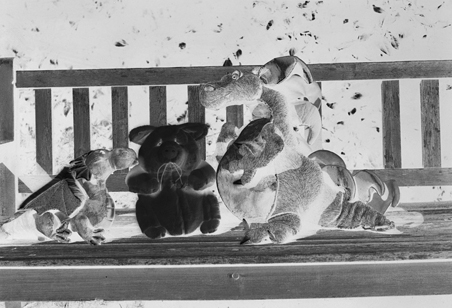
f/11, 1/60 sec, Defender stock — 5 min.
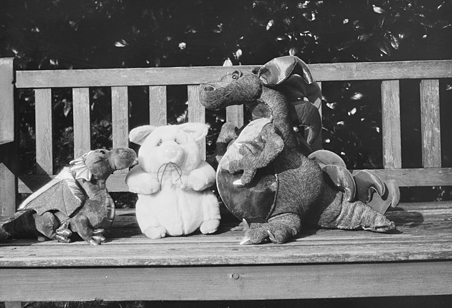
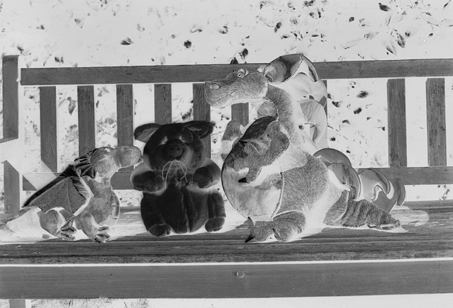
f/11, 1/30 sec, Defender stock — 5 min.
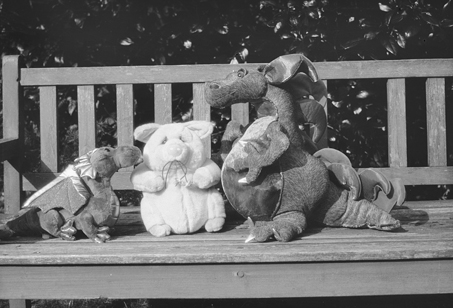
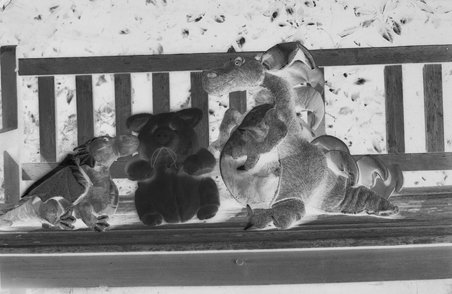
f/11, 1/15 sec, Defender 1:1 — 5 min.

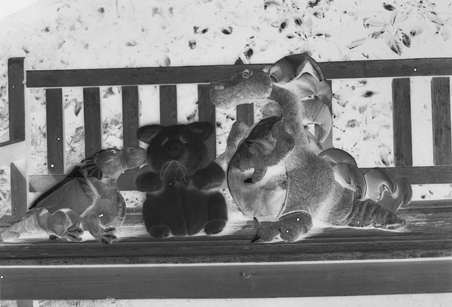
f/11, ⅛ sec, Defender 1:1 — 5 min.
This piece of film was cut from the rump end selvage where micro-bubbles tend to form.

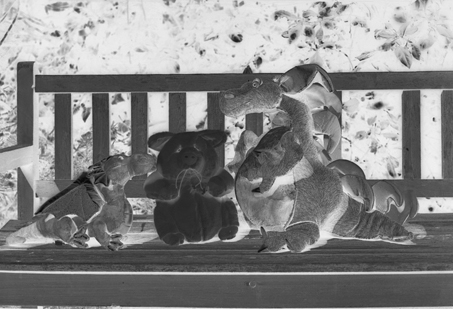
f/11, ¼ sec, Defender 1:1 — 2 min.

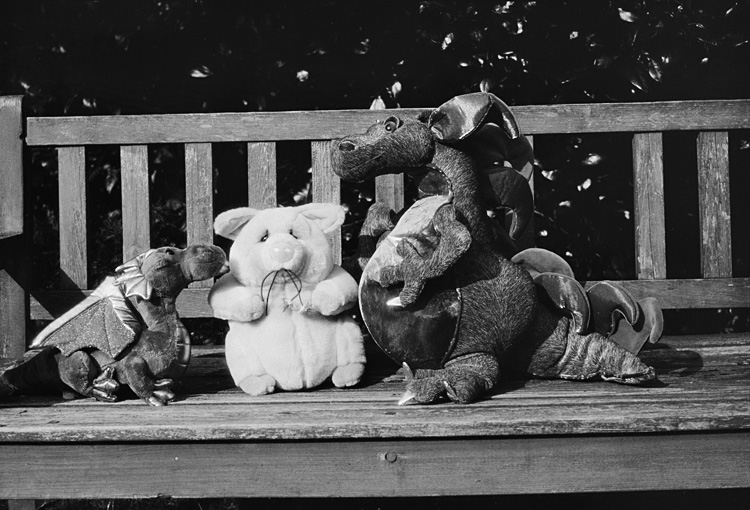
Here are the two extremes—1/60 and 1/4 second exposures. The only manipulation is PS burning in the toys with about the same amount of control I could get with a hole cut in cardboard under an enlarger.
Ultimately, of course, it comes down to the desired interpretation of a scene. In that sense there is no right or wrong exposure, but by most technical definitions, I'd go with 1/30 as the overall best exposure. The shadows may not be as filled-in as possible, but there's almost no irradiation off the highlights. That puts the emulsion between ISO 25 and 50, and that is what I'm bracketing the rest of this batch to. One side of the holder 25, the other 50 — mid-March, mid-day, sea level, 45th parallel.

This coming week I hope to move into papermaking again, with the plan of zigzagging through modifications of both "X2Ag" and various paper recipes and developers. Each loop around the circle drops more information into the story.
[Update: It didn't take a lot of time to nail down an excellent recipe and workflow for X2Ag. The full recipe is in The Light Farm book, available to read for free in Blurb preview. The link is on the home page.]
